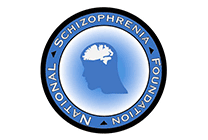 | | | 



| Historical Figures Related To Schizophrenia | |
|
|
|
  | | Emil Kraepelin (1856-1926) | | | Emil Kraepelin was a German psychiatrist who introduced the first systematic classification of psychiatric disorders to be widely accepted; in doing so, he clearly identified the illness that later became known as schizophrenia. He is also important because, while Freud was proposing psychological theories to explain mental illnesses, Kraepelin firmly asserted their physical or biological origin, a position now accepted by mainstream science.
In terms of background, after studying under famous psychologist Wilhelm Wundt, Kraepelin received his medical degree from the University of Wurzburg in 1878. He then practiced clinical psychiatry and taught the subject at the universities in Dorpat, Heidelberg, and Munich. He was an admirer of Bismarck and had learned early on to appreciate order and organization. One biographer stated that "Imperial German psychiatry" gained prominence under the "chancellorship" of Kraepelin.
In his lifetime, Kraepelin became famous in his field, partly because of the widely used textbook he authored, called simply Psychiatry (1883), which underwent nine editions and an English translation over a period of 45 years. Today, experts still cite Kraepelin for his strong emphasis on the physical causes of mental illness, described partly by his distinction between "endogenous" and "exogenous" disorders (the former being an illness with biological origins from organic brain damage, metabolic dysfunctions, or hereditary factors).
In his classification system of psychiatric disorders, Kraepelin identified the diagnosis of schizophrenia under the name "dementia praecox." Kraepelin believed that schizophrenia, or demential praecox, was a distinct disease with its own cause, course, and outcome. To support this claim with data, he meticulously gathered thousands of case histories; his detailed descriptions of patients are still considered valuable by researchers.
Kraepelin further divided schizophrenia into at least three clinical subgroups of the disorder: 1) catatonia - where behavior activities are disrupted, usually inhibited or coming to a standstill; 2) hebephrenia - characterized by inappropriate emotional reactions and behavior; and 3) paranoia - characterized by delusions of grandeur or of persecution.
Although much of Kraepelins' work has been superseded or refined by new advanced in psychiatry, his pioneering work is much appreciated by those learned in the field. As one biographer stated: "Like Pinel and Esquirol, Kraepelin demonstrated repeatedly the importance of utilizing in psychiatry the medical approach of detailed observation, careful description, and precise organization of data. Without this orientation psychiatry could never have become a clinical, disciplined specialty of medicine." |
|
|
